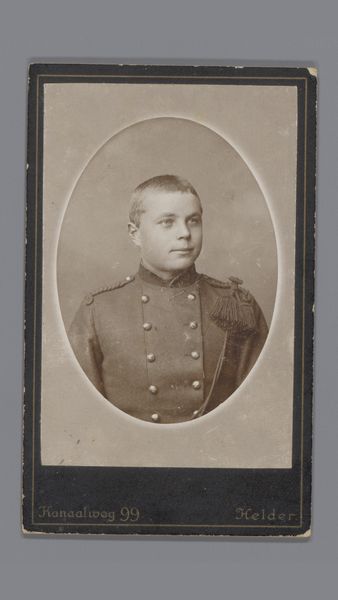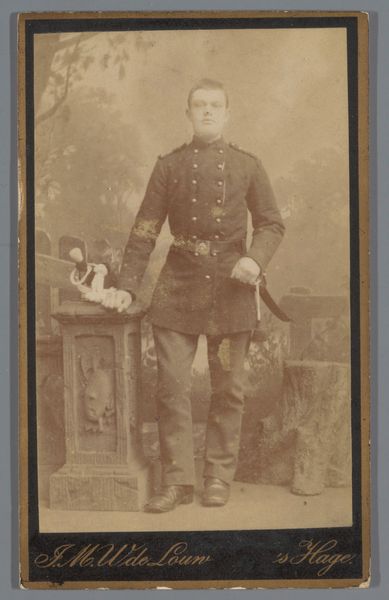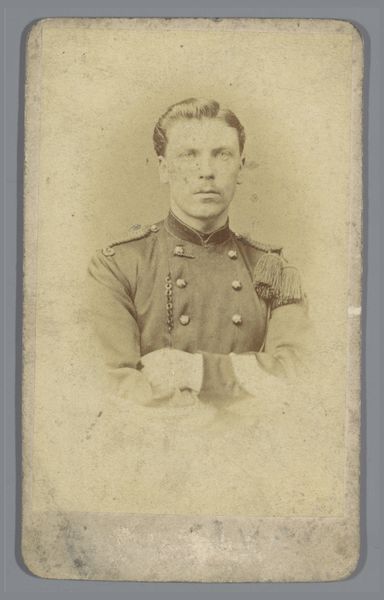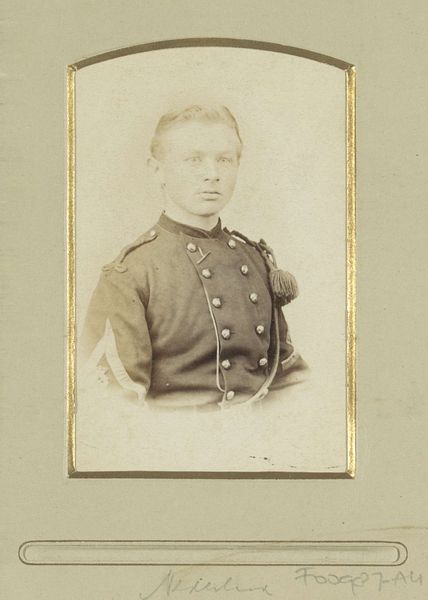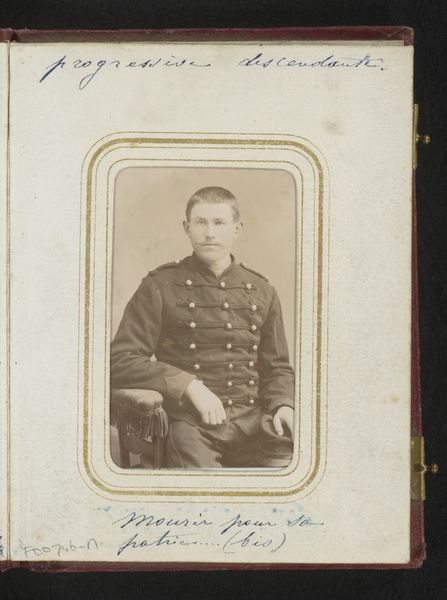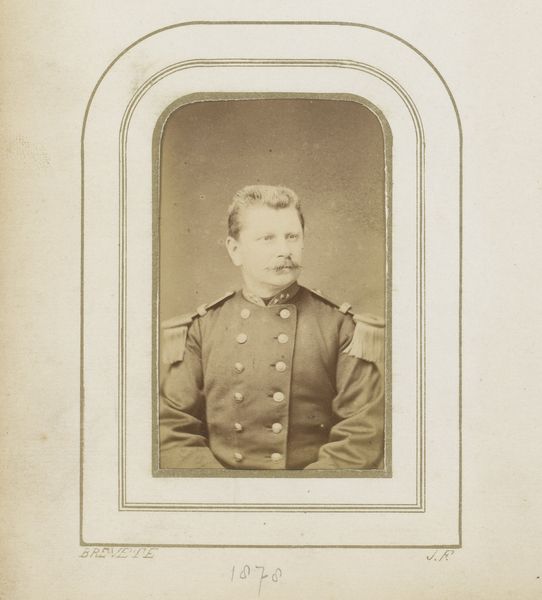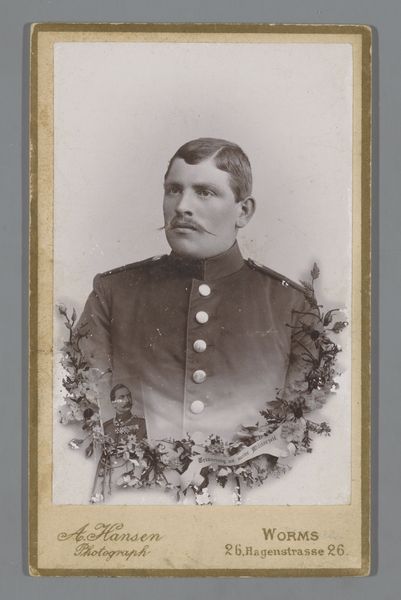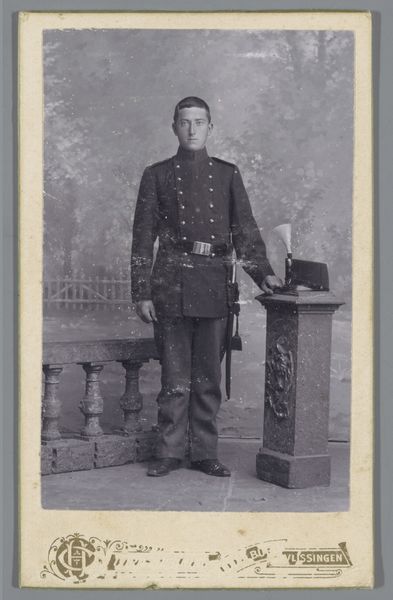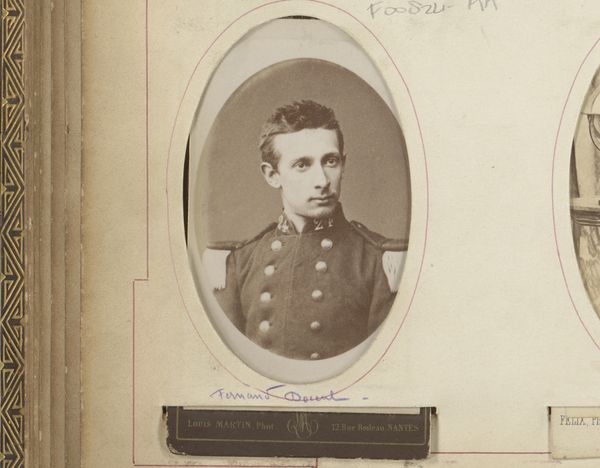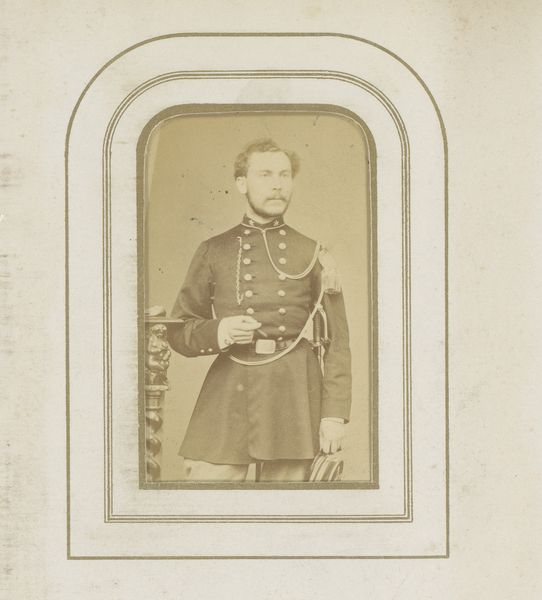
daguerreotype, photography, gelatin-silver-print
#
portrait
#
daguerreotype
#
photography
#
historical fashion
#
gelatin-silver-print
#
19th century
Dimensions: height 104 mm, width 64 mm
Copyright: Rijks Museum: Open Domain
Editor: Here we have, "Portret van een onbekende jongeman in uniform," a portrait of an unknown young man in uniform by Theodorus Ferdinant van de Pol, dating back to between 1890 and 1895. It appears to be a gelatin silver print. It's quite striking how somber he looks. What are your initial thoughts on this photograph? Curator: It is interesting, isn’t it? A seemingly straightforward portrait, yet it holds within it layers of social and historical context. We see this young man in his uniform – a symbol of power, duty, and perhaps even oppression. What does it mean to be conscripted in the late 19th century? How much agency does he truly possess? Consider the power structures at play: nationalism, militarism, even class. Are we celebrating military service here, or should we perhaps be asking who benefits from this young man's potential sacrifice? Editor: So you're seeing his individual experience as reflective of broader societal issues at the time? Curator: Precisely. These images weren't created in a vacuum. The very act of commissioning a portrait like this—a fairly costly endeavour at the time—speaks to social status and aspirations. Whose interests are being served by immortalising him in this way? His family's? The military’s? And think about photography itself—it democratized image-making, yet access wasn’t equally distributed. Editor: That makes me think about the expression on his face – it’s almost defiant, or maybe just… resigned. Curator: And is that his personal feeling or is it affected, composed for the sake of representation? Do we project meaning onto him, or does he successfully represent something to us? Think about the visual language being deployed: the rigid posture, the formal attire. These are tools used to communicate a particular kind of masculinity, of service. What might it have meant to resist such expectations? What tensions are there between the private individual and his public performance? Editor: It's more complicated than I initially thought, it seems. Curator: It always is! Examining the photograph, you have to understand its socio-historical milieu, to unearth the unspoken narratives and power dynamics woven into its very fabric. It invites questions, rather than offering simple answers. Editor: Thanks. I'll never look at old photos the same way again. Curator: And hopefully that's the point, to constantly interrogate how meaning is created, perpetuated, and sometimes, resisted.
Comments
No comments
Be the first to comment and join the conversation on the ultimate creative platform.
